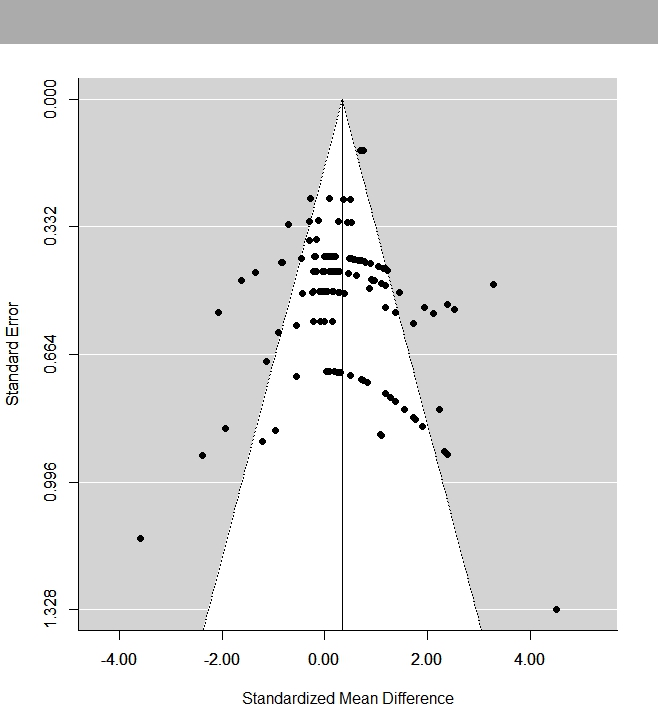I have a set of 130 measurements from about 30 different studies. I have made a random effects meta-analysis of SMD (standardised mean difference) and ROM (ratio of means). I used the DL (DerSimonian-Laird) method. I also made funnel plots to check for publication bias. The SMD funnel plot shows strange stripe like shapes, that I’m guessing are appearing, because multiple measurements from the same author/paper were used. Also I have not seen any instances, where ROM funnel plots were used to test publication bias, are ROM plots an appropriate way to test publication bias?

